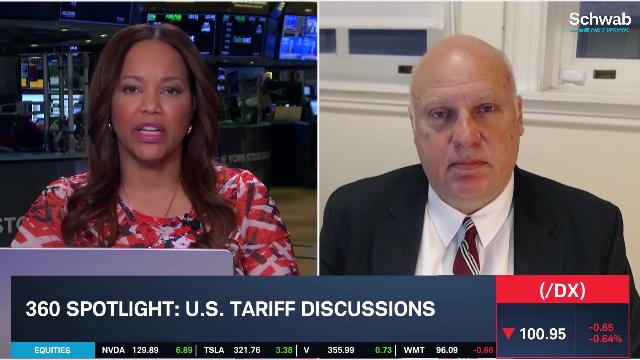- Market Minute
- Posts
- Market Minute: Earnings Previews for DE & WMT
Market Minute: Earnings Previews for DE & WMT

Deere (DE) and Walmart (WMT) both report earnings premarket tomorrow; let’s prepare.
Deere reports 2Q earnings, with Zacks expecting EPS of $5.68 (-33% year-over-year) and revenue of $10.65 billion (-22% year-over-year). It’s clear from the year-over-year drop that analysts are already expecting a rough quarter – in its last report, management forecast a downtrend through 2025.
As a dominant farming company, it is sensitive to tariffs on both sides of the equation: the materials to build its machines, and demand from farmers dropping if they’re unable to sell their harvests. The majority of its revenue comes from agriculture, but it also makes construction and forestry equipment.
In addition to the tariffs, we also have not seen the impact of Trump freezing aid to the U.S. Agency for International Development (USAID), which in 2020 alone bought $2 billion in products from U.S. farmers. The Washington Post reports that 41% of USAID’s food is sourced directly from U.S. farmers, everything from wheat to soybean oil to peanuts and more.
Looking at the chart, DE is up over 17% year-to-date, and up 22% over the last year. It made an all-time high of $515.05 in February. The options market shows an implied move of $22, or around 4%. Investors will be listening for any clarity around demand, but it’s clear that a lot of government policy affecting Deere is still in flux.
Walmart, the behemoth, will give us another look at tariff impacts. It will report its fiscal 1Q 2026, and Zacks expects EPS of $0.57 (-5% year-over-year) and revenue of $165.8 billion (+3% year-over-year). Looking at the chart, it too made an all-time high in February at $105.3, and is up 6% year-to-date and up 59% over the last year. This far outcompetes the chart of rival Target (TGT) (down 39% year-over-year) and Amazon (+13% year-over-year). The options market implies a $5 move, or around 5%.
So far, it seems Walmart is responding to tariffs by pushing its suppliers to cut prices, according to Reuters. Since the first Trump administration’s tariffs, it has diversified its supply chain – mostly to India, where it has committed to importing $10 billion of goods each year by 2027. In 2018, Reuters writes that 80% of its shipments came from China, but as of 2023 it had lowered that to 60%.
Another way Walmart is dealing with tariffs is ordering less products: the OEC, which uses bill of lading data to track companies’ shipments, reported a 17% decline in March. Still, almost all of those shipments came from China. Investors will be watching inventory levels, along with comparable sales data to check in on the consumer as U.S. buyers deal with tariffs, inflation, and interest rates squeezing their wallets. Its report may be a bellwether for trade policy impacts rippling across the economy, 90-day pause or no.
Tune into the Schwab Network for live earnings breakdowns and more!
Morning Minute
Featured Clips
Tune in live from 8 a.m. to 5 p.m. ET, or anytime, anywhere, on‑demand.
Or stream it via thinkorswim® and thinkorswim Mobile, available through our broker-dealer affiliate, Charles Schwab & Co., Inc
Please do not reply to this email. Replies are not delivered to Schwab Network. For inquiries or comments, please email [email protected].
See how your information is protected with our privacy statement.
Charles Schwab and all third parties mentioned are separate and unaffiliated, and are not responsible for one another's policies, services or opinions. Schwab Network is brought to you by Charles Schwab Media Productions Company (“CSMPC”). CSMPC is a wholly owned subsidiary of The Charles Schwab Corporation and is not a financial advisor, registered investment advisor, broker-dealer, or futures commission merchant.




